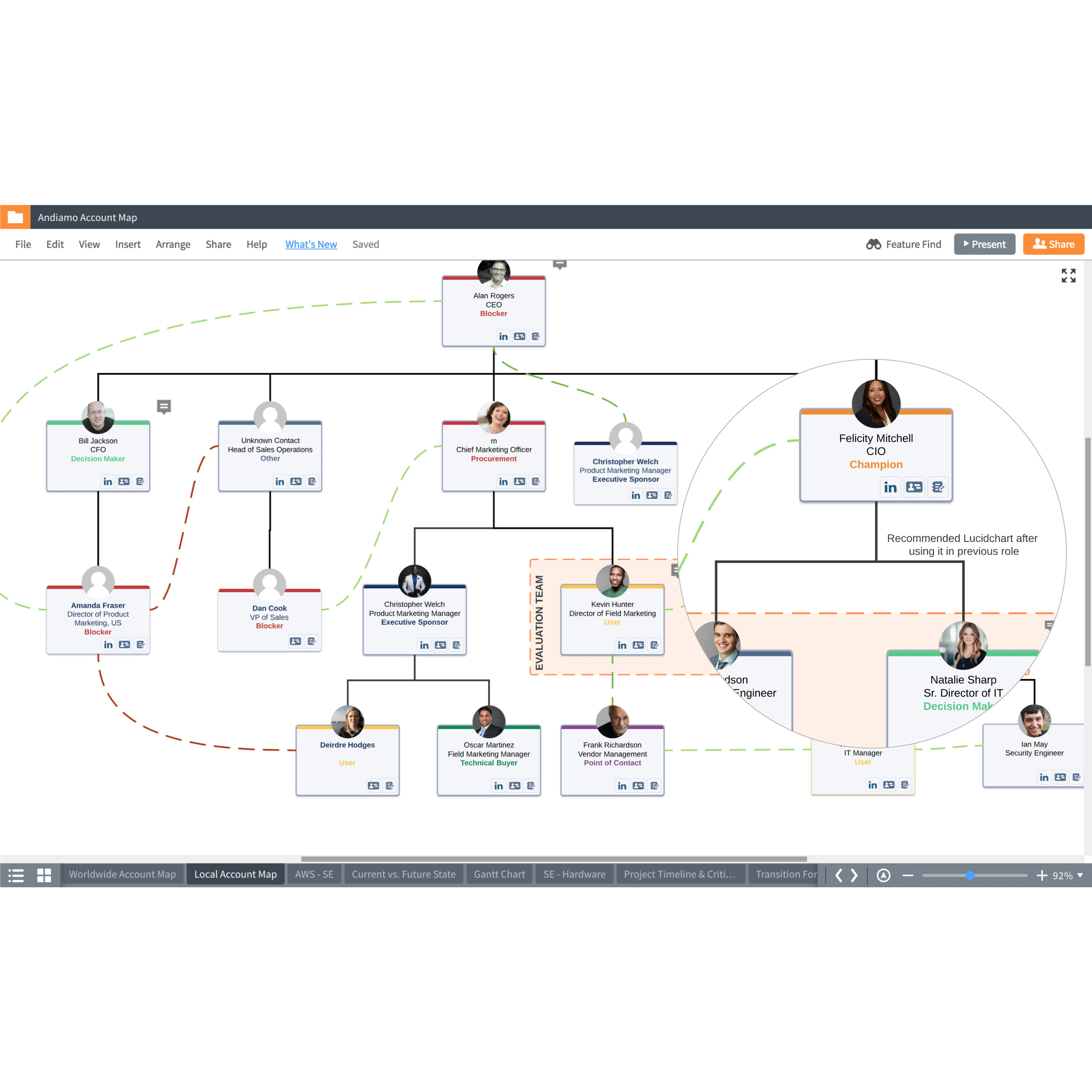
4 ways to improve communication between marketing and sales
Lucid Content
Reading time: about 5 min
Sales and marketing. Two departments, each approaching similar goals with different tactics. At many organizations, they function in silos, often acting independently of one another.
However, most forward-thinking business leaders recognize the need for their sales and marketing departments to work together closely to accomplish shared goals. This cooperative approach doesn’t just promote greater teamwork and resolve conflict. Research suggests that “highly aligned B2B organizations achieve 19% faster revenue growth and 15% higher profitability” than those where sales and marketing don’t align.
In this article, we’ll examine four different strategies that sales and marketing teams can use to improve workplace communications, uncover bigger opportunities, and increase overall revenue by working together. These strategies will help regardless of your industry or the size of your business.
Let’s get started.
1. Recognize the synergistic relationship between sales and marketing
Don't underestimate the value of a great sales team, particularly in regard to its immediate impact on your bottom line. But without marketing, sales won’t prosper.
Years ago, a qualitative model constructed for a Forbes study yielded insights regarding how marketing support (or the lack of) directly impacts sales. For one company lacking marketing activity, product consideration rates lagged 40% behind those of the leading competitor. By bolstering its marketing efforts, this same company raised its consideration rates by 16%. Considering that each 1% difference represented 20 new opportunities, this kind of change is significant.
Here are some basic ways to create synergy between your sales and marketing teams:
- Set aside marketing dollars for awareness campaigns.
- Target current clients for your best promotional offers.
- Create landing pages specific to each product launch.
- Split test digital ads regularly to optimize performance.
Every marketing dollar has the potential to enhance sales growth. For most businesses, a strong revenue-to-cost ratio is 5:1, meaning that for every $1 of marketing spend, you should expect a $5 return in sales revenue. Higher ratios are possible, but not typical.
2. Address any conflicts or misunderstandings that hinder cooperation
Marketing teams create ad campaigns and promote brand awareness. For sales teams, the primary role of marketing is to provide them with a high quantity of quality leads so they can close deals.
When a sales team doesn’t make their quota, it’s often the leads (and by association, the marketing team) that they blame. In turn, the marketing team questions if sales really engaged the leads they provided with the timing and frequency they deserved.
Without trust, the two teams can't cooperate. When marketing doesn’t offer enough leads, sales reverts to the numbers game, wasting too much time prospecting or contacting old leads. But if marketing sends all leads, even if they aren't qualified, sales will waste their time on prospects that never pan out.
By planning ahead, problematic leads can be a thing of the past. Steps to take include:
- Deciding on the criteria for a quality lead (e.g., contact info, expressed interest)
- Agreeing on desired lead flow and contact cadence
- Determining the optimal stage for marketing to hands leads off to sales
When marketing and sales cooperate, marketing will send sales enough of the right kind of leads, and the odds drop substantially of sales contacting leads before they are ready, or storing and forgetting them within the company's CRM.

Map out a consistent lead qualification process for your marketing and sales teams.
Learn how3. Encourage frequent interaction and effective communication between sales and marketing teams
Whether they recognize it or not, sales and marketing are basically two sides of the same coin. Marketing attracts potential clients and sales wins them over.
Given the symbiotic nature of their relationship, one might expect these departments to regularly interface and keep each other informed. Unfortunately, this is not always the case.
Why the disparity? Sales and marketing tend to view things much differently.
With the push to increase revenue, sales teams often place greater importance on short-term results and ROI. Marketing sees more value in building awareness and brand loyalty. Understanding each other’s roles is key. Although organizational structures may vary, sales and marketing responsibilities usually fall under the following guidelines:
- Sales know which tactics work on consumers.
- Marketers provide consumer insights to sales.
- Sales meet directly with potential customers.
- Marketers collect useful data on customers.
As communication becomes more open and interaction more frequent, your sales and marketing teams may actually collaborate on the content creation for the company. By incorporating the perspectives of both teams, consumers will receive more targeted and timely messaging.
4. Reach a consensus on how information and processes are shared
To develop effective account-based advertising campaigns, marketing teams need to know how accounts are structured, how long buying cycles are for different products, and more importantly, who the key influencers and decision-makers are.
Other details, like knowing which contacts are newer (and therefore, have less clout in spite of what their job titles might suggest), can also help when creating quality content.
Rather than have the marketing team create new account maps and conduct their own research on clients, there should be a single source where critical information is shared by sales (and vice versa). Lucidchart makes it possible to import contact data from Salesforce, quickly build account maps, and offer a holistic view of accounts to the whole sales team.
Field reps can also weigh in on or update processes for sales and marketing remotely with Lucidchart’s easy-to-use, web-based platform. Examples of this might include:
- Showing the sequence of events that turn a prospect into a qualified lead
- Illustrating how a customer’s responses to questions indicate their interest
- Determining when a lead is ready to close or if it needs further nurturing
When new employees join your organization, flowcharts, account maps, and other visuals also help accelerate the onboarding process and the transition of established clients.
Take the next step toward sales and marketing team alignment
Getting your sales and marketing teams to coexist in harmony is no easy feat. But it’s definitely a worthwhile goal, one that is achievable with enough time and effort.
For lasting success, both departments must commit to meeting on a regular basis to address conflicts, keep an open dialogue, and recognize each other’s triumphs. By putting these four strategies to work within your organization, you’ll be off to a great start.

Want to better align your teams and close deals faster? Learn why account mapping is a win for your organization.
Read moreAbout Lucidchart
Lucidchart, a cloud-based intelligent diagramming application, is a core component of Lucid Software's Visual Collaboration Suite. This intuitive, cloud-based solution empowers teams to collaborate in real-time to build flowcharts, mockups, UML diagrams, customer journey maps, and more. Lucidchart propels teams forward to build the future faster. Lucid is proud to serve top businesses around the world, including customers such as Google, GE, and NBC Universal, and 99% of the Fortune 500. Lucid partners with industry leaders, including Google, Atlassian, and Microsoft. Since its founding, Lucid has received numerous awards for its products, business, and workplace culture. For more information, visit lucidchart.com.
